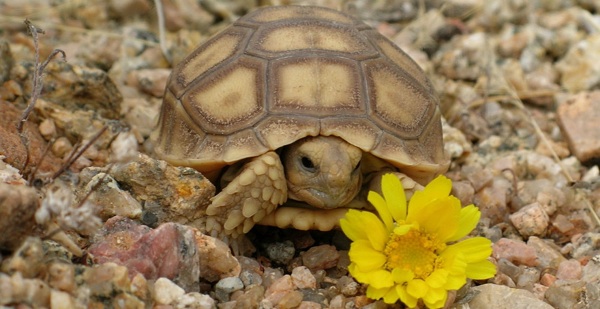Merrick’s model
Colorado-based Merrick & Company has won an Engineering Excellence award from the American Council of Engineering Companies for their “Data Fusion Predicts Habitat Quality” project. Honorees are recognized for demonstrating a high degree of ingenuity and inkling significant technical, economic, and/or social advancements.
The project is part of an initiative by the US Air Force to monitor the impact of operations at their Edwards Air Force base on the surrounding habitats in the Mojave desert, which are home to sensitive and endangered species like the desert tortoise, Joshua Tree, and desert cymopterus.
Merrick participated as the primary mapping consultants for the project, taking responsibility for technical implementation, sensor integration, lidar acquisition, and point cloud post-processing.
The team used multispectral imagery, LiDAR remote sensing, and other tradition arial and field approaches to gather data. Edwards Air Force Base fused these data sets and used them to determine how plant communities change over time as well as perform tasks like modeling ecosystem health, identifying the spatial distribution of noxious weeds, determining where disturbance has occurred, and predicting species habitat quality.
As Brian R. Raber of Merrick explains, “One aspect of the project that the public should know is that a technology solution like remote sensing actually is working. We were able to go back and look at the history of these kinds of projects and be able to analyze, in this change detection mode, one data set to another and actually see that the conservation efforts at the base are making an impact and the habitat is actually growing so that desert tortoises have a place to thrive in the desert environment.”
This data, and the insight it delivers, assist the Air Force base’s environmental management team in their conservation efforts. It also helps show that the efforts are having a positive effect on the surrounding habitats and endangered species.
“Where there’s an existing data set like the one we created for this project,” Raber says, “we can go back and do a change detection and actually compare one dataset to another. That allows Merrick to show where a habitat might have changed, from the first time a mission was flown to the second time, thus support the mission of the base to assess the quality of their efforts to manage project from a conservation standpoint.”
Merrick has also won an award for their work on the “Calumet Montana Refining Crude Unit #2” project, which involved helping the refinery increase its production from 9,800 barrels per stream day to about 20,000 barrels, with future provisions made to allow for up to 30,000 barrels.

A desert tortoise






